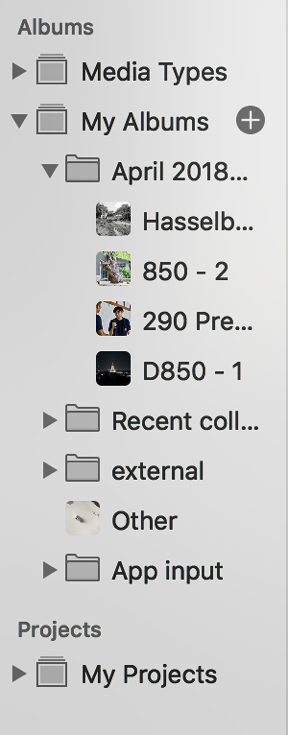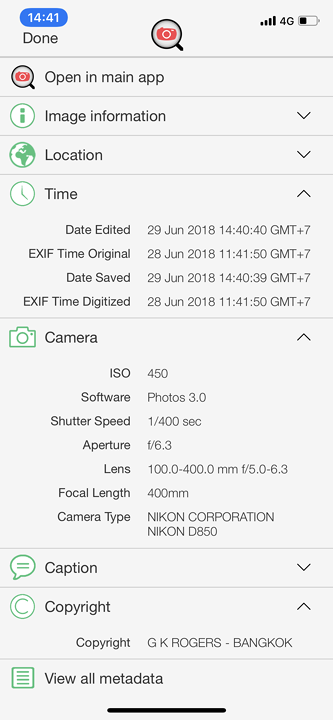|
|
Cassandra - Rethinking Photo Workflows (Amended)By Graham K. Rogers
When Apple announced that they were to cease development of Aperture I was disappointed like many others: after several years I had to find other software and adjust to that; and users of Aperture had too much invested for Apple just to end this. I still see this as a mistake, although there has been some mitigation since. Not long after Apple announced this change, I hunted around and examined several applications with the clear winner (then) being Phase One. Their cameras are wonderfully expensive and so too now is the application at $299. If I were a professional photographer, this would be feasible, but not in my current state.
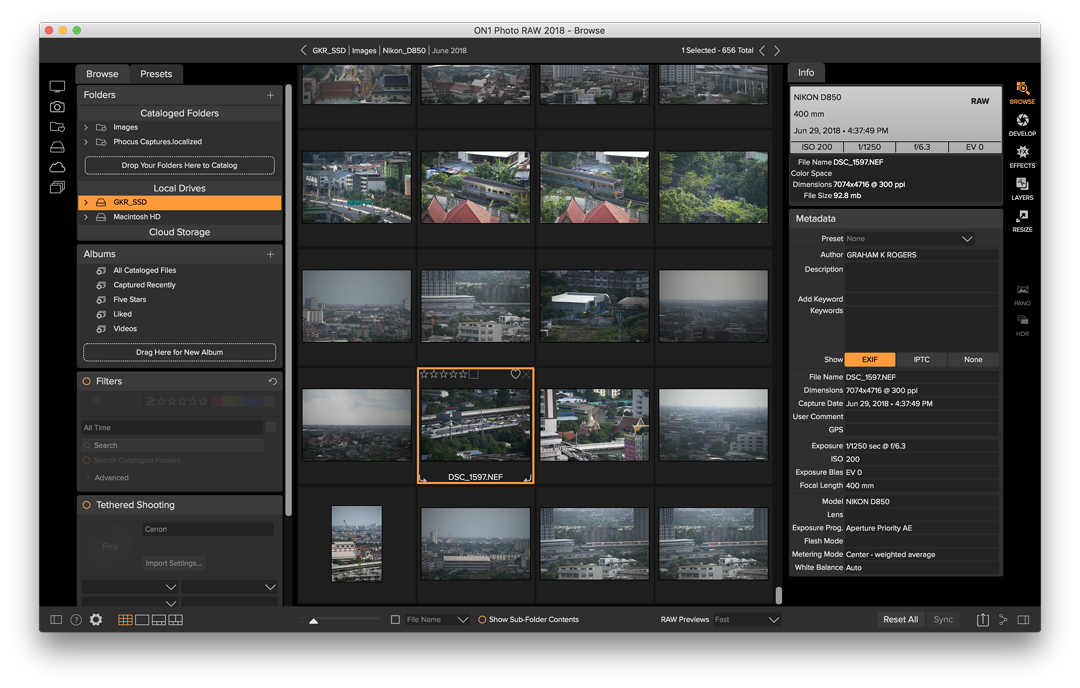
ON1 RAW Photo
Currently I import all RAW images from my Nikon D850 to Photos. Aperture cannot handle the output from this camera. I also import all scans from film negatives. I keep some of the RAW and scanned TIFF images in Photos, but store 100% of the original files on SSD. ON1 catalogued the RAW images quickly, but not the scanned TIFF files. A single TIFF image created from a Hasselblad RAW file was shown. Aperture could not handle the RAW Hasselblad files when I took these a couple of years ago. When i used the Finder window to import one of the TIFF images, all were greyed out. suspect that the specific format from the scans is incompatible, but this is what I work with. When I commented on this in a reply to a Twitter message, ON1 contacted me right away and confirmed my suspicion: "You'll want to make sure your images are in an RGB color space." Although I had deleted ON1, I downloaded it again while waiting for a reply from ON1 tech support.
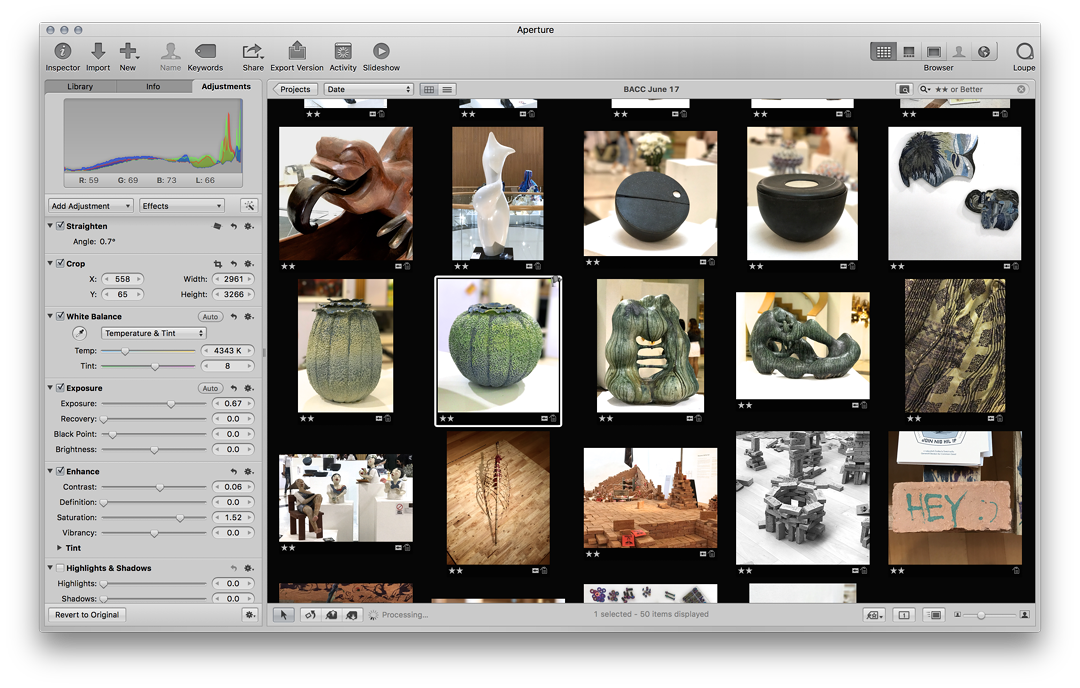
Aperture
Over the years I created several libraries. The current library is on the hard disk of my MacBook Pro, while others are stored on a separate external disk (with backups). It is a simple task to switch between libraries, so older images are accessible. I haven't quite got the hang of this with Photos just yet, partly because of the tighter integration with iCloud Photos.
All images are imported into the Photos Library which is organised by Date. Location is also added to the panel if available. Apple also has its own organisers: Memories, Favorites, Locations and Faces. As far as I can see these cannot be turned off and dominate the top of the organising panel. Items at the top also include Imports and Recently Deleted. In Albums (below Library) I have two main sections: Media Types, which includes 11 specific image outputs (Bursts, Panoramas, Videos, et al); and My Albums, which contains several folders. These contain images from the camera output and from specific apps (macOS and iOS) that integrate with Photos. There were so many that the use of folders to bring these under control was critical to my effective use of Photos. Also important is that this file structure is carried over to my other Macs and to iOS devices, although the vertical structure of the Albums and folders is adapted to the different interface of the iPhone and iPad.
Before I delete any images from the Photos Library, I export them from Photos to the external SSD. Again this is a workflow adjustment as I am unable to find a reader for the XQD card in Bangkok, and transferring the images within the camera from XQD to SD card changes the date and time: from the time of creation to the time of transfer. Original image metdata on the XQD card is unchanged. While the Mac will synchronise when not connected to a power source, this is preferable. I have found that it may also be better for the iOS device to be connected to power for most efficient synchronisation. My experience is that the Library will be synchronised first, and only when this is complete will Albums be updated.
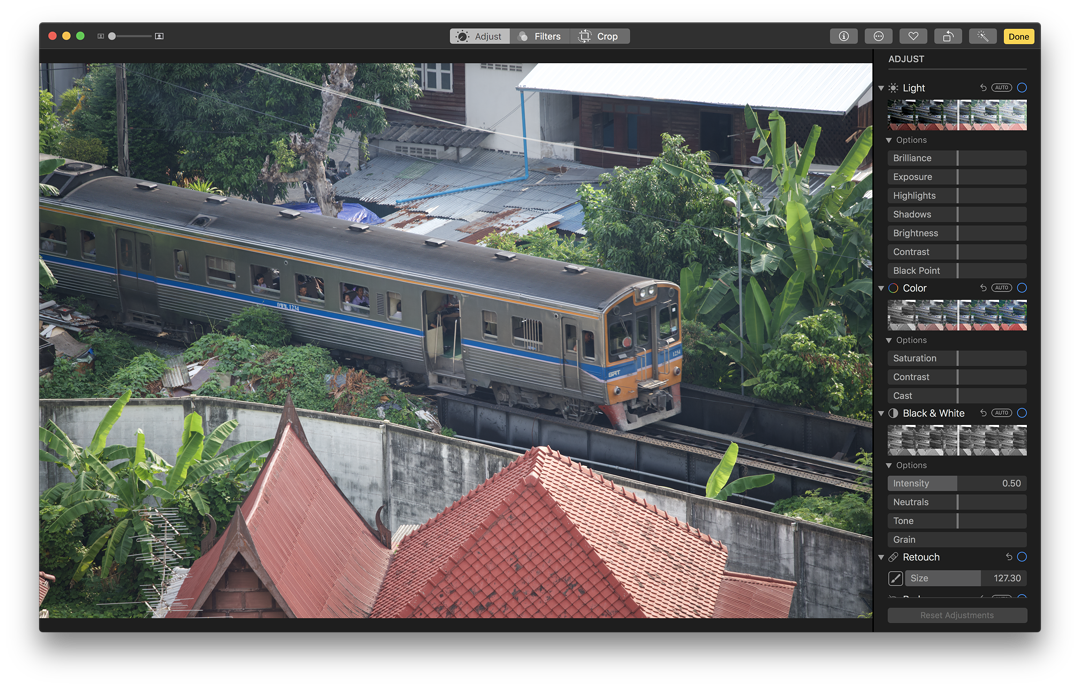
Editing in Apple Photos
One thing I did notice in the thread was the number of users - some with sophisticated camera gear - who advocated use of Photos. This justified my view that this is an alternative to other applications, although it has several shortcomings in terms of image information and editing tools. Its use also needs the user to adjust the workflow, but that should be a relatively easy hurdle to overcome.
Metadata in Photos (left) and iOS using Photo Investigator app
Recent improvements to the editing panel include Selective Color which allows some fairly sophisticated adjustments to be made; but the best editing tools are accessed using extensions, and these depend on specific applications that the user has installed. I have 26 listed in the Photos Editing pane of the Extensions preferences panel, although some of these are no longer accessible and I have unchecked them, while others are duplicates or have been superseded. I have 12 I regularly make use of, giving me a range of filtering options up to full image editing, all from within Photos. Although I am resigned to Photos for now, particularly as I rely on the folder structuring and synchronisation, it needs considerable reinforcement. Or Apple could reinvent Aperture.
See also:
Graham K. Rogers teaches at the Faculty of Engineering, Mahidol University in Thailand. He wrote in the Bangkok Post, Database supplement on IT subjects. For the last seven years of Database he wrote a column on Apple and Macs. After 3 years writing a column in the Life supplement, he is now no longer associated with the Bangkok Post. He can be followed on Twitter (@extensions_th) |
|


